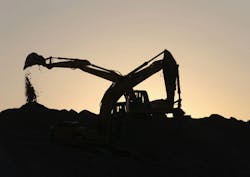If you work in construction, you know that working on a construction site can be one of the most dangerous and hazardous jobs out there. On average, there are nearly 150,000 injuries on the job each year, and 824 workers were killed in 2013 alone. As you work on different construction sites, you know better than anyone that proper safety starts and ends with your decisions and how you conduct yourself.
One of the main dangers on the site is the heavy machinery used for various projects. Safely operating these machines is of the utmost importance. Thirty-five percent of on-the-job injuries are caused by machine accidents each year, as well as 14 percent of work-related deaths.
So what are some steps and measures you can take to ensure that safety is the top priority when operating heavy machinery?
Here are five tips to ensure that everyone on your site is safe at all times:
Invest in training – One of the most important ways to increase safety is by ensuring that your staff is well-trained on the equipment they are operating. These machines are highly technical, and each one has its own quirks and attributes. You must understand your equipment before you even put your hands on the controls, otherwise disasters are bound to happen.
Inspect your machines – Each machine has thousands of moving parts or more, and each needs to be in peak condition before it can do the job. Properly inspecting your machines and knowing they are up to par is crucial to ensuring safety. Regular inspection of your machines can avoid accidents and injuries.
Slow it down – There always are deadlines on any project, which is why you experience stress to get the project done. Unfortunately, one of the largest causes of accidents on construction sites is due to people moving too quickly. Avoiding an injury or accident is as easy as taking your time, and making sure you’re being safe and smart about the machines you’re using.
Rushing on the job is sure to lead to accidents, so don’t let the stress of the deadline get to you — consider slowing it down a bit.
Always pay attention – On the job, there are dozens of distractions at any given moment because of everything going on around you. A leading cause of mishaps on a construction site involves workers not paying attention to the task at hand. Staying focused on what you’re doing and the machine you’re operating saves you from mistakes, and it saves lives. Stay on task and you’ll stay safe.
Communicate effectively – In all aspects of life, communication is perhaps the most important way to drive results and meet deadlines. When working with heavy machinery, communication is just as important. Creating safety policies and procedures for your machines — and making sure you constantly communicate them — can save lives and money in the long run.
Stay on top of workers who are not working with safety procedures in mind, and make sure they know about all of your policies.
Stay vigilant – There are many tasks that can cause injuries on a construction site, such as falls from scaffolding/high places, hazards in excavation jobs and electrical mishaps. Work-related deaths are a real possibility when working in construction, and heavy machinery often can be one of the main causes of these tragedies.
Staying knowledgeable and safe with your equipment is a surefire way to make sure you’re protecting yourself and your coworkers. There are even courses you can take to review your safety knowledge, so you can stay up to date on the latest safety protocols. These courses also will educate your staff and ensure that they are staying safe throughout the course of the project.
Construction sites can be hazardous places and accidents can happen at any minute. If you stay safe, pay attention and understand your equipment, your job will remain hazard-free and rewarding.
About the author: James White is construction worker and an experienced home improvement blogger. His writing has appeared in many publications, including True Look, Constructonomics and Building Blok. White is involved in promoting the ideas of sustainable building and construction safety. And, when he's not saving the planet through his blogging, he revels in exploring the latest developments in the construction industry.
